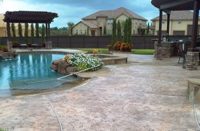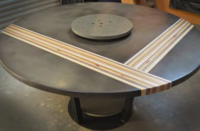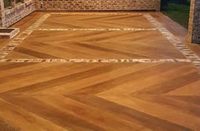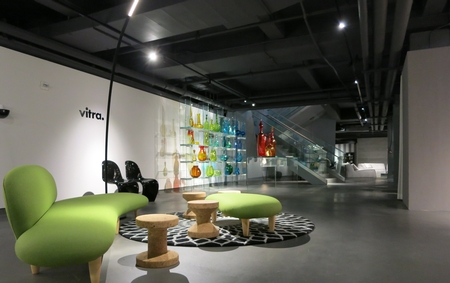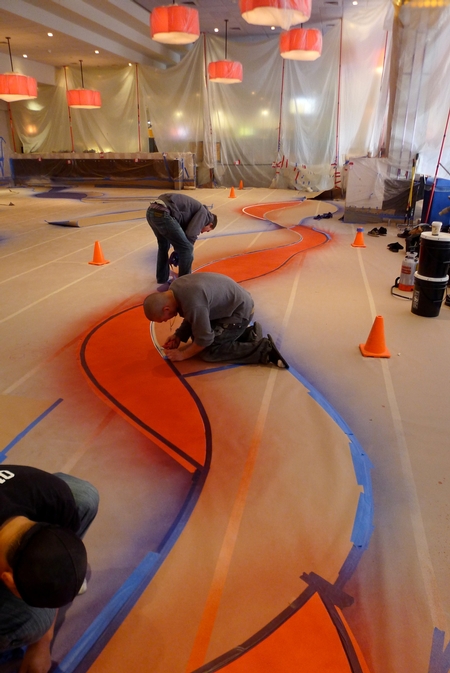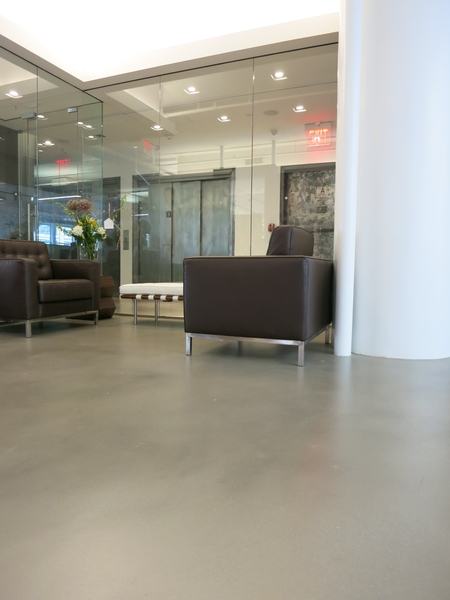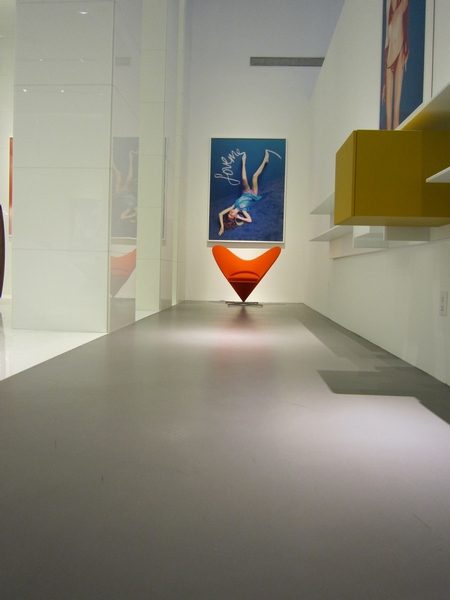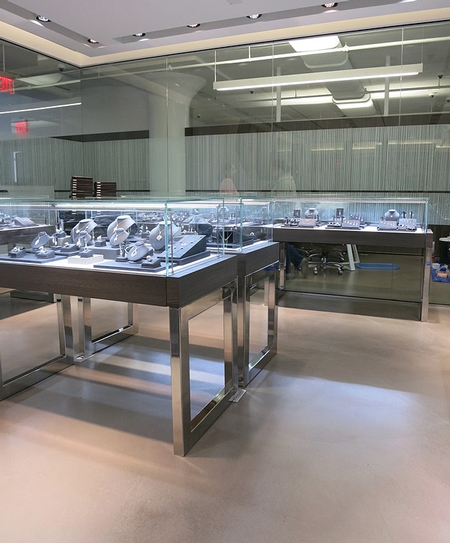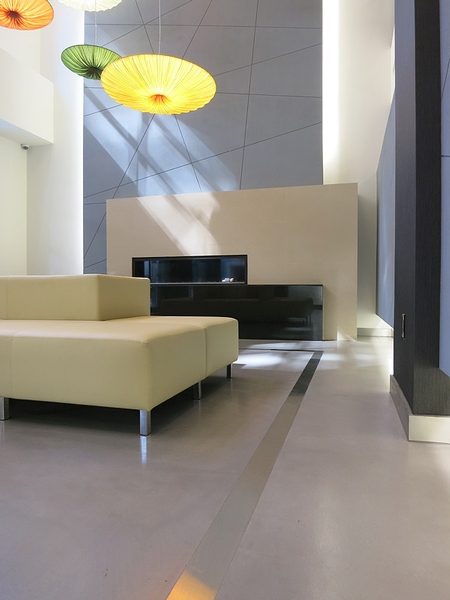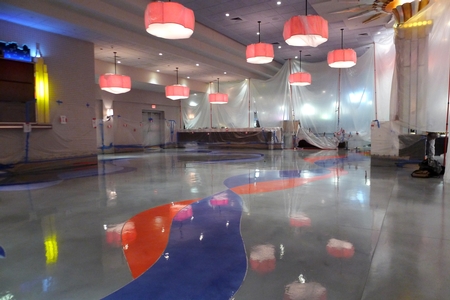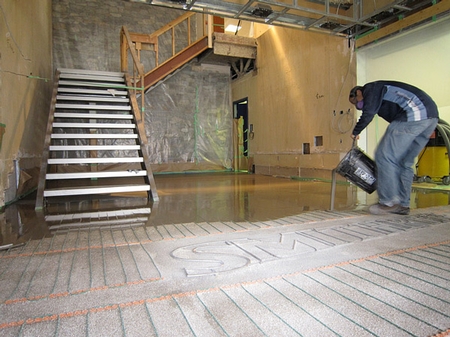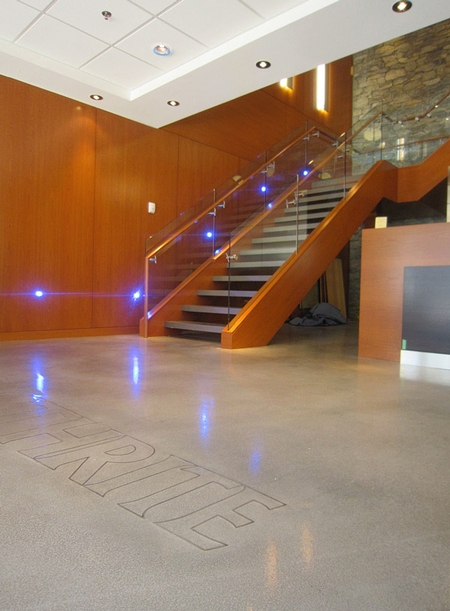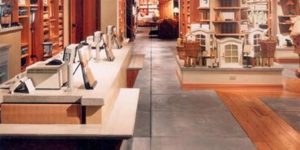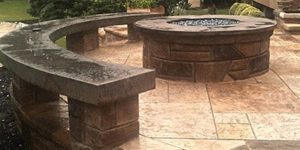After being in the decorative concrete business for a little more than a decade, Paul Huneck, owner of Hudson Concrete in New York City, is in a spot that many other decorative concrete professionals would envy. High-profile clients come to him with interesting projects. He makes his entire living in a territory 13 miles long and 2 miles wide — the island of Manhattan.
Coming from a family of artists who work in various media, Huneck, 48, didn’t grow up aspiring to express himself in concrete.
But he calls concrete work a natural extension of his art background. “When you say you’re in the concrete business, people don’t think of it as being artistic,” he says. “They just think you’re pouring foundations. But there are many visual elements or components. That’s what’s kept me intrigued and passionate about this extraordinary material all this time.”
In 1994 Huneck was a filmmaker attending the MFA program at the Massachusetts College of Art and Design. He came to New York with the prospect of a job at MTV.
Although the job prospect fell through, Huneck wanted to stay. “I had to start a business,” Huneck says.
Drawing on his undergraduate degree in horticulture, Huneck started supplying indoor plants to corporate clients.
After three years of that, he joined a friend’s construction firm, then started his own company renovating building facades. When his company won a contract to point the brick on Abercrombie & Fitch’s building in Manhattan, Huneck met an executive in charge of the company’s new construction, who asked if Huneck had an interest in working on the distinctive mottled floors of Abercrombie & Fitch stores.
“They had a very specialized microtopping that only one company in the country was doing,” Huneck says. “They were looking for someone on the East Coast to work with them.”
“I threw myself into it,” he says. “After quite a few months, I was able to replicate that look for them. Then we started traveling nationwide and doing their floors.”
|
|
|
When Huneck got tired of living on the road, he decided to confine his work to New York and venture beyond microtoppings. Gotham pharmacy chain Duane Reade approached Huneck to polish floors in its stores. Once Huneck had invested in polishing equipment, he pursued other polishing jobs. Hudson Concrete’s business now consists of about half polishing and half new floor installation.
Huneck’s preferred system is a sprayed microtopping with broadcast aggregate he created himself, called Petratone. He often collaborates on projects with Gary Jones, owner of British Columbia-based manufacturer Smart Surface Technology Inc. Together they create finishes that look like anything from natural hand-crafted troweled concrete to — well, the moon, actually. Last year, clothing designer Marc Jacobs commissioned Hudson Concrete to create a 5,000-square-foot moonscape for a fashion show at the Lexington Avenue Armory. More recently, Hudson used Petratone to create the illusion that a large sculpture by Robert Longo is emerging from the floor of Petzel Gallery in the Chelsea neighborhood of Manhattan.
But Hudson Concrete’s bread and butter is restoring old concrete slabs. “People from other parts of the country don’t realize how old New York is,” Huneck explains. “Most of the concrete we do is 50-100 years old. A lot of coatings, paint, adhesive, old carpet, tiles — all these tenants putting down different things over the years. It all has to be removed.”
Instead of polishing these floors to a high gloss, Huneck often hones and seals them. “When you polish something that’s really old, it loses its age,” he says. ”You’re erasing all these nuances because you’re grinding it so hard and refining it to a point where there’s no sign of its age any more. When you don’t grind it as aggressively and finish it as much, there’s little microcracks and nuances everywhere that show its age. And that’s what most people want. It’s a cooler-looking floor.”
Hudson Concrete currently employs eight people in the field and one in the office. “We do eight to 10 jobs a month, and we usually have two or three jobs going at once,” Huneck says.
As his business has matured, Huneck has shifted away from residential work and even small commercial projects to larger projects. “It’s the lack of construction management on the job site,” he says. “Do I want to deal with somebody that’s the end user, has never dealt with construction ever, and has no understanding of what the requirements are?
“A smaller job takes longer to do because you have to micromanage it. I’d rather be managed by competent general contractors, architects, people who know. Otherwise, it gets too inefficient.”
Currently, Huneck gets about 60 percent of his business from word of mouth and 40 percent from his website, Hudsonconcretepolishing.com.
To take his business to the next level, Huneck is focusing on streamlining. “This is a business that can only grow with well-trained labor who understand the vision of the company and have all the tools and support at their disposal at each of the job sites they may be working at on a given day.”
Huneck considered putting GPS tracking devices on his toolboxes, but the cost discouraged him. So he’s developing a system of kits — a cleaning kit, a sealing kit — that contain all the necessary tools for a part of the project.
He also wants to improve organization in his office procedures.
“I want to take it to the next level, but you’ve got to be superorganized,” Huneck says.
There’s a lot of demand for decorative concrete in New York these days, Huneck says, and adjusting to the improving market isn’t easy. “The other day, in one day, a quarter of a million dollars worth of business came in. I looked at this and I thought, ‘We couldn’t do it.’ I don’t like the feeling.
“All of us participate in the downside when the economy’s not great, but it’s hard to participate in the upside. It rebounds — there’s all this work coming in, but there’s a limit to what you can do.”
To take advantage of more opportunities, Huneck is considering a profit-sharing model for Hudson Concrete. “The employees would take a percentage of each job if it’s done well, on time, with less management from me. So they’re more self-sufficient and autonomous.
“So that’s what I’m really working on now: How can we do a higher percentage of what’s coming in?”
www.hudsonconcretepolishing.com
